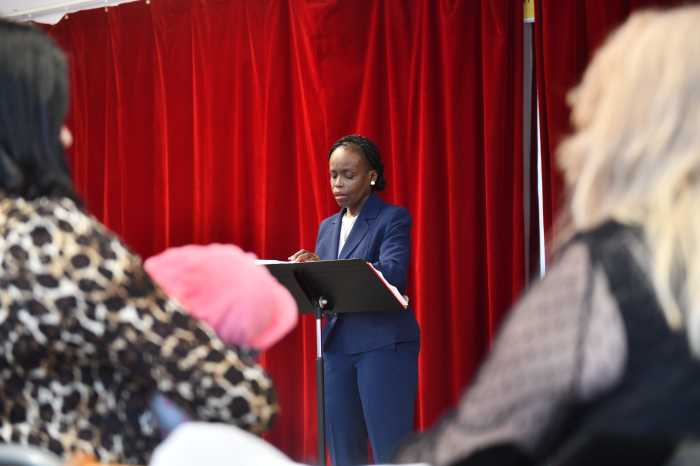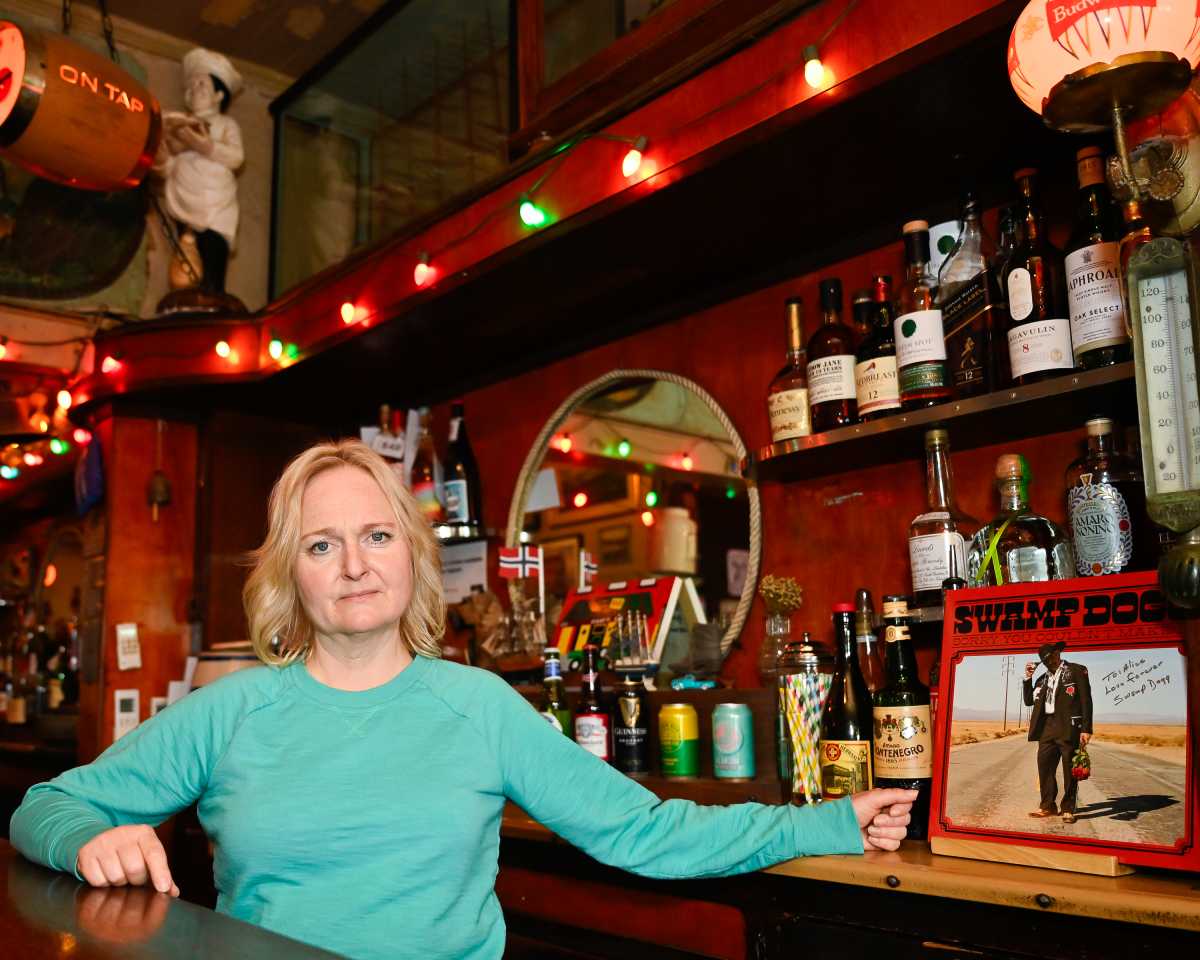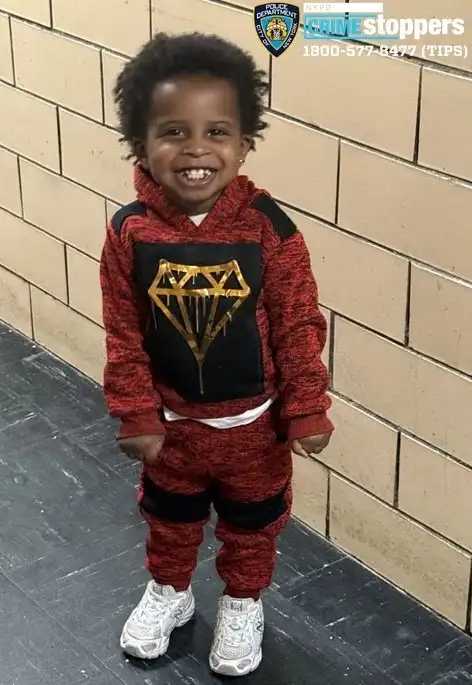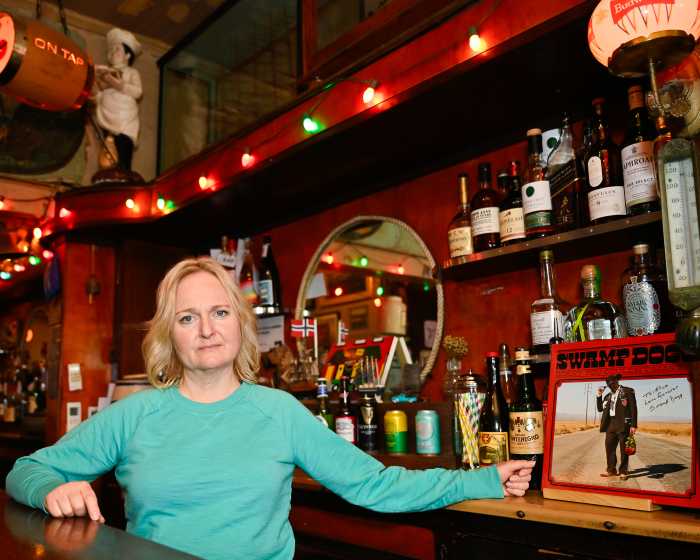Just a day before closing on Broadway, George Clooney and the cast of “Good Night, and Good Luck” performed the historic play about truth and journalism in front of millions worldwide through a live CNN broadcast on Saturday night.
The five-time Tony-nominated show reached far beyond the more than 1,500 people at the Winter Garden Theatre on June 7 for what cast member Clark Gregg described on CNN after the performance as the thrill “to have that suddenly become millions.”
“Opening night nerves, for sure. That’s the best way I can think of it,” cast member Fran Kranz said after the June 7 broadcast before the June 8 closing. “I’d be lying if I said I wasn’t nervous. But it was good energy.”
The play, directed by David Cromer and featuring Clooney as CBS’ Edward R. Murrow, tells the story of Murrow standing up to McCarthyism as companies unceremoniously fired employees suspected of Communist ties. It was the first time a Broadway show was broadcast live on television and streaming on CNN’s website.
BroadwayHD CEO Bonnie Comley called the CNN broadcast a “headline moment in a much bigger story: The growing value of filmed and streamed stage productions in bringing Broadway-quality theater into homes across the country.”

BroadwayHD, however, entered Guinness World Records for the first “live stream of a Broadway show” in 2016 with the Roundabout Theater Company production of “She Loves Me.”
“It’s livestream vs broadcast,” Comley said, “but both are legitimate firsts.”
Even though the CNN broadcast made Broadway history, it’s actually déjà vu in some respects for Clooney, who performed live on air in “Ambush” the premiere episode of the fourth season of ER on Sept. 25, 1977.
Clooney and Anthony Edwards, who were castmates on the classic medical drama, reportedly suggested doing a live episode. The broadcast reached 42.71 million viewers and becoming the most-watched season premiere of a drama. It reportedly became among the top three most-watched dramas in history, following Dallas (“Who Done It”, November 21, 1980) and Magnum, P.I. (“Resolutions”, May 1, 1988).
If Clooney performed a TV episode broadcast live, Broadway shows historically have protected ticket prices by a being-there-and-seeing-there policy, at least until after closing.
“It is always, always, always a good time to know our history,” director David Cromer told CNN outside the Winter Garden the day of the broadcast. “This is an incredibly important part of our history.”
According to The Hollywood Reporter, twenty cameras and 14 camera operators took part in the production, making Broadway history without commercial breaks after treating Friday and the Saturday matinee as rehearsals for the broadcast.
Mark Cuban and Todd Wagner’s production company 2929 Entertainment, Jeff Skoll’s Participant Media and Clooney financed the production, the Hollywood Reporter reported. They produced the 2005 film, starring David Strathairn as Murrow, on which the play is based and the play.
Clooney earlier called CNN “the perfect place to bring this story of courage to so many more people than we could have ever,” simply on stage with the script he wrote with Grant Heslov. Clooney directed and played CBS News President Fred Friendly in the 2005 movie.
“People would disappear from their jobs and they wouldn’t be heard from again,” Kranz said. “The rest of their colleagues wouldn’t get any notice or reason why they were gone.”
The play, based on a screenplay written about 20 years ago, includes many lines that seem to comment on current events, while telling the story of journalists wrestling with the decision of whether to become advocates or simply announcers of fact.
“It tracks an early moment when a news broadcast took on something that was happening, even though it seemed that might run into real blowback,” Gregg, who plays Don Hollenbeck, said. “It’s at a moment when that’s a very new thing.”
In a show filled with clicking typewriters and chain smoking, we hear Clooney say, “The terror is right here in this room.” Many lines seem contemporary, such as “We don’t make the news; we report.” Clooney says they can’t take on McCarthy and Hearst.
When Gregg as Hollenbeck says it’s as if “all the reasonable people took a plane to Europe and left us behind,” Clooney as Murrow laughs as if he knows that some people believe that line to be true today.
After McCarthy’s office calls for equal time, we see Joe McCarthy, “the junior senator from Wisconsin,” attack Murrow, but not his facts.
“It was so timely,” former CNN CEO and Time magazine editor Walter Isaacson said after the broadcast.
Clooney, in an interview before the broadcast with CNN newscaster Anderson Cooper, said he sees it as a hopeful story.
“It’s always good to walk away, reminding yourself that we’ve been in tight spots before and we got through it,” Clooney said, adding, “Challenge people with more power than you. Defend people with less power.”
Former CBS newscaster Connie Chung, who arrived at that network soon after Murrow, said individual rather than corporate ownership empowered newscasters.
“It was a time when Walter Cronkite ruled the roost. But Murrow was there at the same time that Walter was,” she said. “The reason they had power was because William Paley gave it to them.”
The Broadway show and broadcast, interspersed with video of McCarthy and other footage, ends with a montage showing events since then and talk of things such as “alternative” facts.
“We’ve lost so much trust in what we’re hearing,” Gregg added. “At the same time, we desperately need somebody telling us what the truth is.”

































![STATEOFFIRSTS_[MELISSALANGER]_9](https://gaycitynews.com/wp-content/uploads/2025/06/STATEOFFIRSTS_MELISSALANGER_9.jpg?quality=51&w=700)